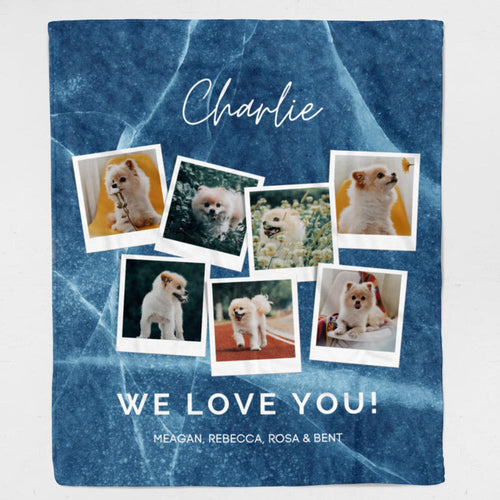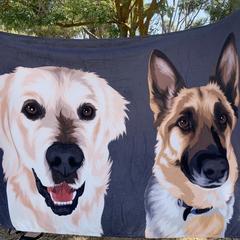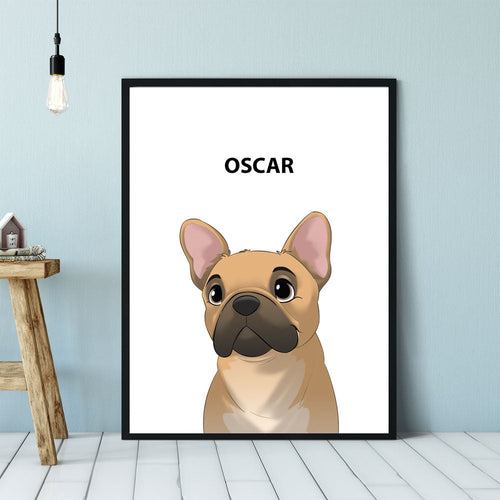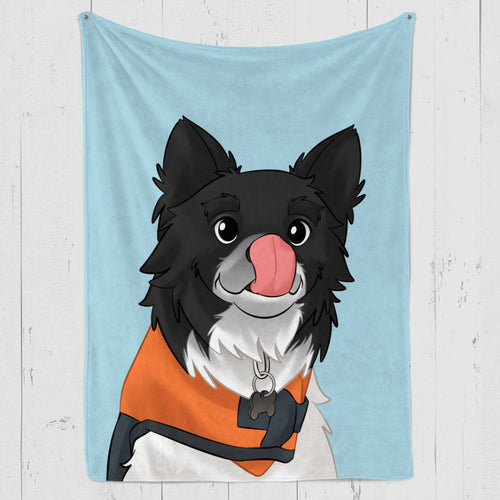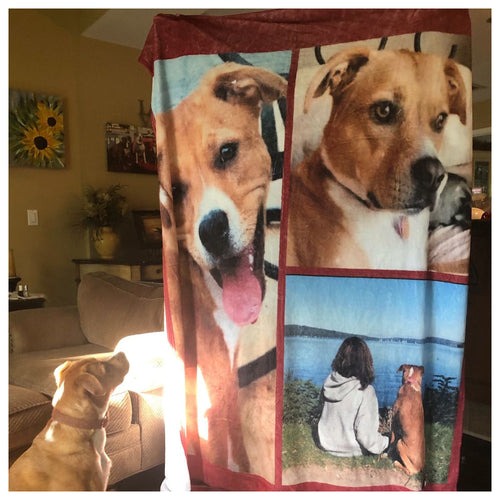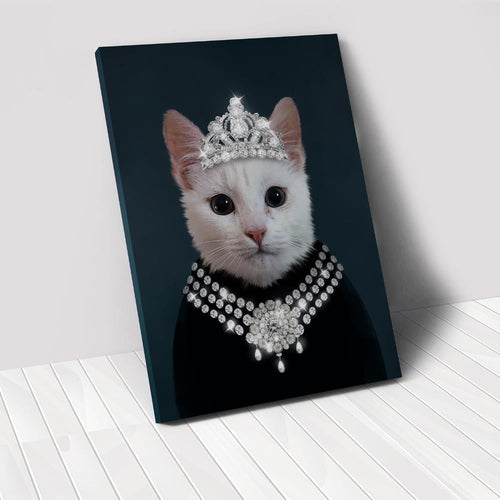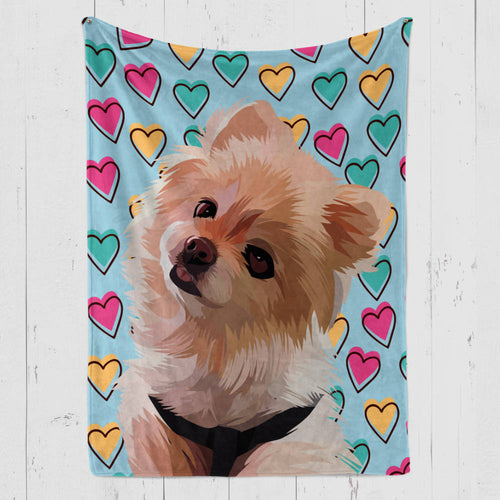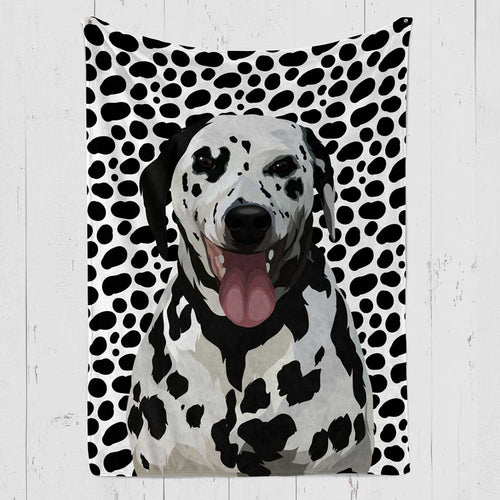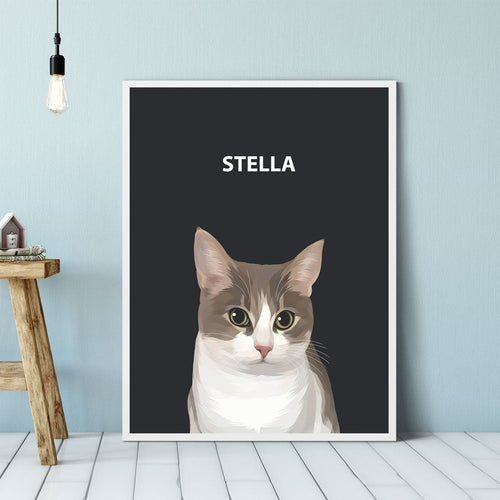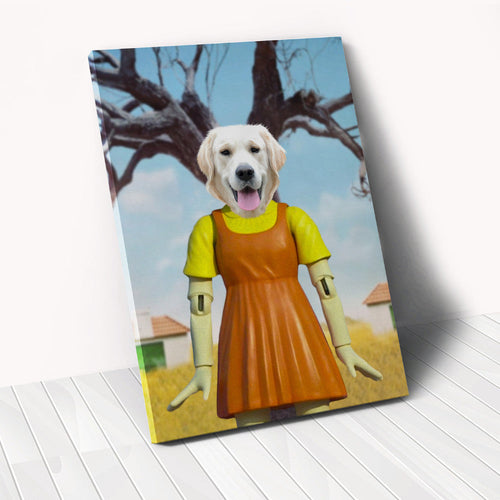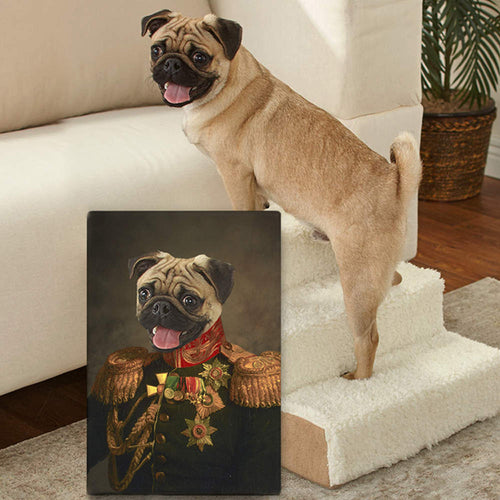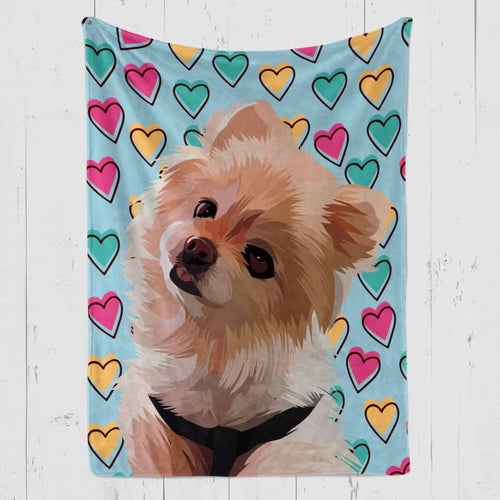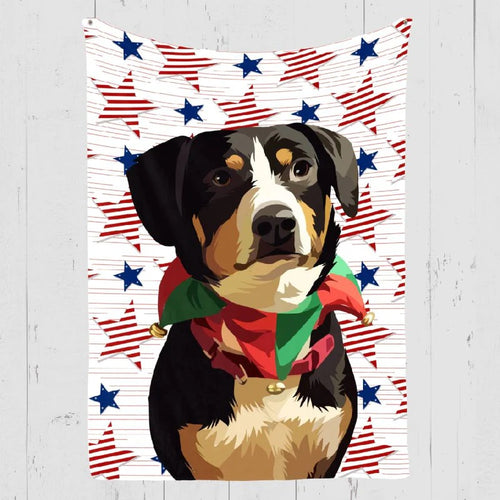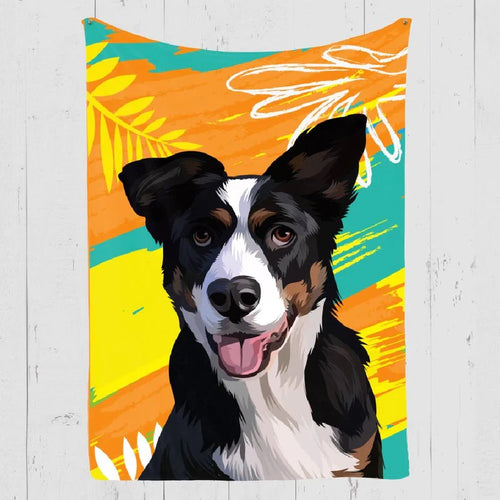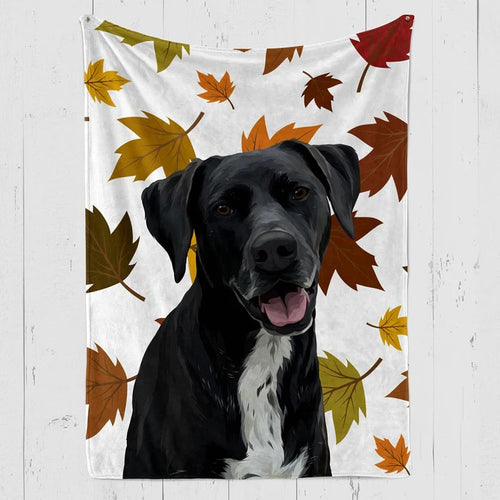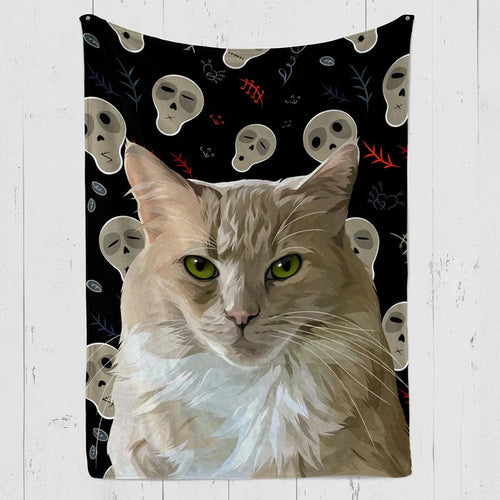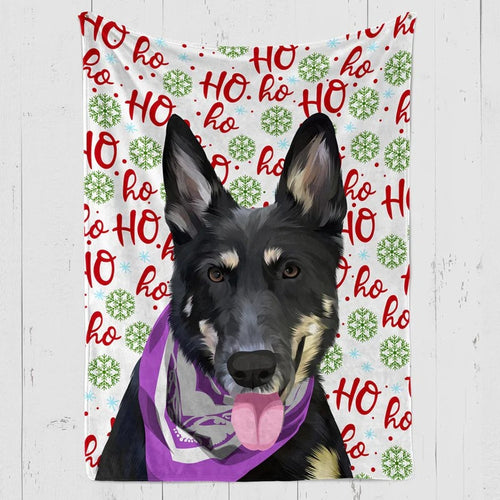
Dog owners all throughout the world spend a huge amount of time searching for the perfect collars for their beloved pups that are attractive as well as fit comfortably around their necks. However, sometimes, pet parents end up getting a collar that is either too loose or too tight. So, exactly how tight should a dog collar be?
But before jumping onto that question, let us first understand the basics of a dog collar.
What is a Dog Collar?
A dog collar is generally a strap that is worn around the neck of your dog. It basically serves two purposes: one is for the identification of your dog in a crowd and the second is to restrain your dog from certain activities.
Types of Dog Collars
Dog collars are primarily used for training, walking, and identification. Now, let’s look at the different types of dog collars for large dogs and small dogs:
1. Everyday Collars
These are the most common types of dog collars. Everyday collars come with quick-release clasps or metal buckles and are available in various types of materials and colors.
Several pet owners choose metal buckles over quick-release clasps for stronger and heavier dogs as they are less likely to break.

2. Metal Prong Collars
If you have a strong and stubborn dog, the metal prong dog collars are a perfect match for you. These dog collars are also known as pinch collars as it pinches the skin of the dog when pulled against it which can cause dog collar injury. Hence, these dog collars are no longer recommended by the majority of the animal experts.

3. Chain Slip Collars
Chain slip collars, commonly known as choke chains, are no longer in use as per animal behaviorists and veterinarians due to their high risk of dog collar choking and dog collar strangulation. Chain slip collars were mainly used for training purposes but were moved away later on due to their health risks.

4. Martingale Collars
Popularly known as Greyhound collars, they are highly preferred as they keep the pup from slipping out of a dog collar leash while walking. Martingale collars have a perfect dog collar fit as they are just tight enough to prevent the slipping of dogs and not cause any discomfort to them.
5. Smart Collars
Just by the name of it, you can tell that smart collars are more advanced than your traditional buckle collars. The smart collars are generally compatible with smartphones and include several attributes such as GPS to track the location of your dog, a sensor to detect a change in their behavior, and also assist them in training.
What are the Different Dog Collar Sizes?
The different types of collars might overwhelm you with which one to choose for your dog. Therefore, the following table lists down some of the common dog breeds and their dog collar sizes to ease your search:
|
Dog Breed |
Neck Size (in.) |
Weight(lbs.) |
Suggested Size |
|
Afghan Hound |
16-22 |
42-46 |
Medium-Large |
|
German Shepherd |
18-24 |
50-90 |
Medium-Large |
|
Lhasa Apso |
12-16 |
13-15 |
Small-Medium |
|
Golden Retriever |
55-75 |
55-75 |
Medium-Large |
|
Chihuahua |
8-14 |
2-6 |
Small-Medium |
|
Airedale Terrier |
16-22 |
42-46 |
Medium-Large |
|
Australian Kelpie |
15-21 |
25-45 |
Medium-Large |
How To Measure Your Dog’s Collar Size? :
Now that you have got an idea about the different dog collar sizes, you should know how to measure your dog’s neck for that perfect fit. As dogs tend to grow pretty fast, getting a proper collar requires you to measure your dog’s neck accurately. Sizing a dog collar is very important for their health and safety.
Below, we have mentioned some steps which will guide you on how to properly measure your dog’s neck and go for the purchase accordingly.
1. Remember the Age and Breed of Your Dog
Large collars work great for puppies. As puppies tend to grow quickly, get the puppy collar having the maximum adjustable size range. However, if you have a full-grown dog, go for the small of the two sizes. This ensures no hanging of extra dog collar material.
Also, you get several dog collar sizes by breed which is definitely a plus point!
2. Measure the Dog’s, Current Collar
The easiest way to measure is to get a measurement of the previous dog collar. However, before measuring an old collar, make sure that it is in a perfect size and that you just want to replace your dog collar for some other reason.
First, lay the dog collar on flat ground and measure from the middle of the buckle to the hole that was used by your dog. Don’t measure end to end as it might give you a wrong measurement.
3. Make Use of a Measuring Tape to Size Your Dog’s Neck
Pick a soft measure tape and wrap it around your dog’s neck, a bit lower from the head. Use the two-finger rule (slip two fingers under the measuring tape that ensures enough breathing space for your dog). In order to provide maximum comfort to your dog, you need to have a clear idea of how tight should a dog’s collar be to allow your dog to move comfortably.
Note the number after measuring, and get the dog collar within that size range. Suppose your dog’s neck measures 16 inches; get a collar with a size range of 14-18 inches.
However, if you don’t find a measuring tape, grab a ribbon, string, or a cloth strip and wrap it around your dog’s neck. Add 2-3 inches and mark the endpoint. To get the perfect measurement, take a metal ruler and measure the string size.
How to Know if Your Dog’s Collar is Too Tight or Too Loose?
A dog’s collar should be such that it fits around the neck snugly leaving enough space for your dog to breathe. The perfect collar is not necessarily a loose collar that slips off when the leash is pulled. It should also be not so tight that it progresses to skin irritation or strangulation.
Is It Necessary to Wear a Dog Collar All Day?
Dog collars should be worn whenever the dogs are outside. This helps to locate and identify the dog if lost. If you are staying in with your dog, wearing a dog collar all day is not necessary.
How to Conduct Regular Collar Checks?
Check the dog collar fit at least once a week if you have a puppy as they tend to grow very quickly. As mentioned before, always use the two-finger rule to ensure enough neck space for your dog.
Now, for small breeds, being able to fit one finger is enough but with medium-sized breeds, you must be able to fit two fingers. However, with large breeds, one must accommodate three fingers.
Too loose collars for puppies can also push them toward strangulation as they could catch on to something because of their curiosity.
Takeaway
Dog collars are an important everyday accessory for dogs that comes in handy in various ways. One of the most important advantages of a dog collar is that we can keep a dog collar leash attached to it. This helps to locate your dog easily if it gets lost in a crowd. Always go for a dog collar that serves the breed and size of your dog.
Keeping a pet can turn out to be overwhelming sometimes, but with the help of the right accessories such as dog collars, you can avoid all the unwanted hassles. Now that you have an idea of how tight should a dog collar be, get the right fit for your pup!
Frequently Asked Questions
How tight should a dog collar be?
A dog collar must leave enough space for you to slip two fingers under the collar. If you are unable to do that, it is time for you to get your dog a new collar.
What are the dangers of a dog collar that are too tight?
Dog collars that are too tight might cause your dog to choke or strangulate, in extreme cases.
What are some tips for keeping my dog's collar safe?
Here are some easy tips to keep a dog collar safe:
- You should remove the collar during playtime
- You can remove the collar when the dog is at home or inside a crate
- Make sure to pick the right size
- Keep a check on your dog and its surroundings when it’s wearing the collar
Reference Links :
- https://monropets.com/pages/dog-collar-sizes
- https://worldanimalfoundation.org/dogs/how-to-measure-for-a-dog-collar/
- https://www.masterclass.com/articles/how-tight-should-a-dog-collar-be
Recommended Articles :
- Why Does My Dog Lick The Couch
- How To Protect Your Bed From Your Dog?
- Why Do Dogs Suck On Blankets?
- Birthday Gift Guide For Dog Lovers
Similar Articles
Latest Review on Woof Blankets
To have such a masterpiece by my side every day is a gift for me and my memories with Rex. Thank you WoofBlankets for such an opportunity to recreate his image on a blanket.Lara o’ Miguel US, California
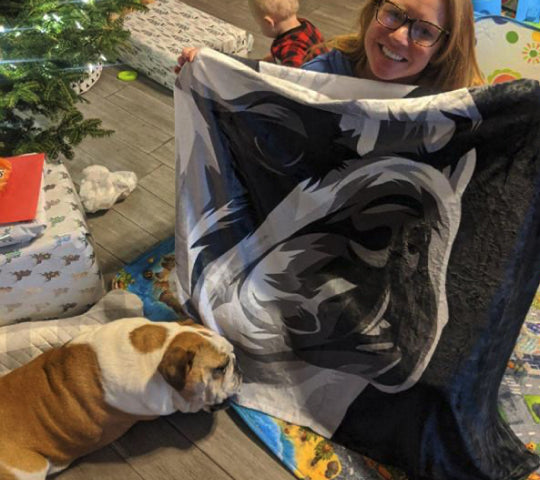
COLLECTION WORTH EVERY PENNY
BEST SELLERS
-
Woofy Single Color Custom Pet Blanket
![Woofy Single Custom Pet Blanket – Woof Blanket]()
- -41%
BlanketsSHOP NOW- Regular price
- from $64.95
- Sale price
- from $64.95
- Regular price
-
$109.95 - Unit price
- per
Sold out -
The French Sailor - Custom Pet Portrait
![]()
- -25%
CanvasSHOP NOW- Regular price
- from $59.95
- Sale price
- from $59.95
- Regular price
-
$79.95 - Unit price
- per
Sold out -
Summer Time Custom Pet Blanket
![Summer Time Custom Pet Blanket]()
- -39%
BlanketsSHOP NOW- Regular price
- from $69.95
- Sale price
- from $69.95
- Regular price
-
$114.95 - Unit price
- per
Sold out -
Pet Memorial Custom Photo Collage Blanket
![Personalized pet memorial quilt with photos]()
- -41%
BlanketsSHOP NOW- Regular price
- from $64.95
- Sale price
- from $64.95
- Regular price
-
$109.95 - Unit price
- per
Sold out -
4th of July Custom Pet Blanket
![4th of July Custom Pet Blanket Online]()
- NEW
- -39%
BlanketsSHOP NOW- Regular price
- from $69.95
- Sale price
- from $69.95
- Regular price
-
$114.95 - Unit price
- per
Sold out -
Modern Pet Portraits
![Cute Dog Modern Pet Portraits Online]()
- NEW
- -36%
CanvasSHOP NOW- Regular price
- from $59.95
- Sale price
- from $59.95
- Regular price
-
$93.95 - Unit price
- per
Sold out -
The Admiral - Custom Pet Portrait
![The Admiral - Custom Pet Portrait Online]()
- NEW
- -25%
CanvasSHOP NOW- Regular price
- from $59.95
- Sale price
- from $59.95
- Regular price
-
$79.95 - Unit price
- per
Sold out -
Woof Splash Custom Pet Blanket
![Woof Splash Custom Pet Blanket]()
- -39%
BlanketsSHOP NOW- Regular price
- from $69.95
- Sale price
- from $69.95
- Regular price
-
$114.95 - Unit price
- per
Sold out -
The Policeman - Custom Pet Portrait
![]()
- NEW
- -25%
CanvasSHOP NOW- Regular price
- from $59.95
- Sale price
- from $59.95
- Regular price
-
$79.95 - Unit price
- per
Sold out -
The General - Custom Pet Portrait
![]()
- NEW
- -25%
CanvasSHOP NOW- Regular price
- from $59.95
- Sale price
- from $59.95
- Regular price
-
$79.95 - Unit price
- per
Sold out -
Woof Love Custom Pet Blanket
![Woof Love Custom Pet Blanket]()
- -39%
BlanketsSHOP NOW- Regular price
- from $69.95
- Sale price
- from $69.95
- Regular price
-
$114.95 - Unit price
- per
Sold out -
The Ambassador - Custom Pet Portrait
![The Ambassador - Custom Pet Portrait Online]()
- NEW
- -25%
CanvasSHOP NOW- Regular price
- from $59.95
- Sale price
- from $59.95
- Regular price
-
$79.95 - Unit price
- per
Sold out -
Fall In Love Custom Pet Blanket
![Fall In Love Custom Dog Blanket]()
- NEW
- -39%
BlanketsSHOP NOW- Regular price
- from $69.95
- Sale price
- from $69.95
- Regular price
-
$114.95 - Unit price
- per
Sold out -
Cartoonized Pet Portraits (New)
![Cartoonized Pet Custom Portraits Online]()
- -36%
SHOP NOW- Regular price
- from $59.95
- Sale price
- from $59.95
- Regular price
-
$93.95 - Unit price
- per
Sold out -
The Classy Lady - Custom Pet Portrait
![The Classy Lady]()
- NEW
- -25%
CanvasSHOP NOW- Regular price
- from $59.95
- Sale price
- from $59.95
- Regular price
-
$79.95 - Unit price
- per
Sold out -
The Duke - Custom Pet Portrait
![The Duke - Custom Pet Portrait]()
- NEW
- -25%
CanvasSHOP NOW- Regular price
- from $59.95
- Sale price
- from $59.95
- Regular price
-
$79.95 - Unit price
- per
Sold out -
Dog In Suit- Custom Pet Portrait
![Dash Dog In Suit- Custom Pet Portrait Online]()
- NEW
- -25%
CanvasSHOP NOW- Regular price
- from $59.95
- Sale price
- from $59.95
- Regular price
-
$79.95 - Unit price
- per
Sold out -
The Princess - Custom Pet Portrait
![]()
- NEW
- -25%
CanvasSHOP NOW- Regular price
- from $59.95
- Sale price
- from $59.95
- Regular price
-
$79.95 - Unit price
- per
Sold out -
Modern Pet Portrait with One Mug
![Modern Pet Portrait with One Mug]()
- -25%
Print MaterialSHOP NOW- Regular price
- from $99.95
- Sale price
- from $99.95
- Regular price
-
$133.95 - Unit price
- per
Sold out -
The Aristocrat - Custom Pet Portrait
![The Aristocrat - Custom Pet Portrait At Best Price]()
- NEW
- -25%
CanvasSHOP NOW- Regular price
- from $59.95
- Sale price
- from $59.95
- Regular price
-
$79.95 - Unit price
- per
Sold out -
Single Color Custom Blanket with 1 Mug
![Single Color Custom Blanket with 1 Mug]() BlanketsSHOP NOW
BlanketsSHOP NOW- Regular price
- from $99.95
- Sale price
- from $99.95
- Regular price
-
- Unit price
- per
Sold out -
Single Color Custom Blanket with 2 Pillows
![Single Color Custom Pet Blanket with 2 Pillows]()
- -21%
BlanketsSHOP NOW- Regular price
- from $99.95
- Sale price
- from $99.95
- Regular price
-
$125.95 - Unit price
- per
Sold out -
The Dog in Suit Custom Pet Mug
![]()
- -20%
MugsSHOP NOW- Regular price
- $39.95
- Sale price
- $39.95
- Regular price
-
$49.95 - Unit price
- per
Sold out -
Angel Custom Pet Mug
![]()
- -20%
MugsSHOP NOW- Regular price
- $39.95
- Sale price
- $39.95
- Regular price
-
$49.95 - Unit price
- per
Sold out -
This Human Belongs To - Custom Pet Mug
![]()
- NEW
- -20%
MugsSHOP NOW- Regular price
- $39.95
- Sale price
- $39.95
- Regular price
-
$49.95 - Unit price
- per
Sold out -
It's Not Dog Hair Custom Pet Mug
![]()
- NEW
- -20%
MugsSHOP NOW- Regular price
- $39.95
- Sale price
- $39.95
- Regular price
-
$49.95 - Unit price
- per
Sold out -
My Dog Is My Valentine Custom Pet Mug
![]()
- NEW
- -20%
MugsSHOP NOW- Regular price
- $39.95
- Sale price
- $39.95
- Regular price
-
$49.95 - Unit price
- per
Sold out -
3 Photos With Message Custom Pet Mug
![]()
- NEW
- -20%
MugsSHOP NOW- Regular price
- $39.95
- Sale price
- $39.95
- Regular price
-
$49.95 - Unit price
- per
Sold out -
My Valentine Has Four Legs- Personalized Mugs
![]()
- NEW
- -20%
MugsSHOP NOW- Regular price
- $39.95
- Sale price
- $39.95
- Regular price
-
$49.95 - Unit price
- per
Sold out -
Dog Mamma Custom Pet Coffee Mug
![]()
- -20%
MugsSHOP NOW- Regular price
- $39.95
- Sale price
- $39.95
- Regular price
-
$49.95 - Unit price
- per
Sold out -
Uncle Sam - Custom Pet Portrait
![]()
- NEW
- -25%
CanvasSHOP NOW- Regular price
- from $59.95
- Sale price
- from $59.95
- Regular price
-
$79.95 - Unit price
- per
Sold out -
The Revolutionary Emperor - Custom Pet Portrait
![]()
- NEW
- -25%
CanvasSHOP NOW- Regular price
- from $59.95
- Sale price
- from $59.95
- Regular price
-
$79.95 - Unit price
- per
Sold out -
The Princess Paws - Custom Pet Portrait
![]()
- -25%
CanvasSHOP NOW- Regular price
- from $59.95
- Sale price
- from $59.95
- Regular price
-
$79.95 - Unit price
- per
Sold out -
Exclusive Custom Pet Blanket
![Exclusive Custom Pet Blanket]()
- -39%
BlanketsSHOP NOW- Regular price
- from $69.95
- Sale price
- from $69.95
- Regular price
-
$114.95 - Unit price
- per
Sold out -
The Dark Crusader Knight - Custom Pet Portrait
![]()
- -25%
CanvasSHOP NOW- Regular price
- from $59.95
- Sale price
- from $59.95
- Regular price
-
$79.95 - Unit price
- per
Sold out
